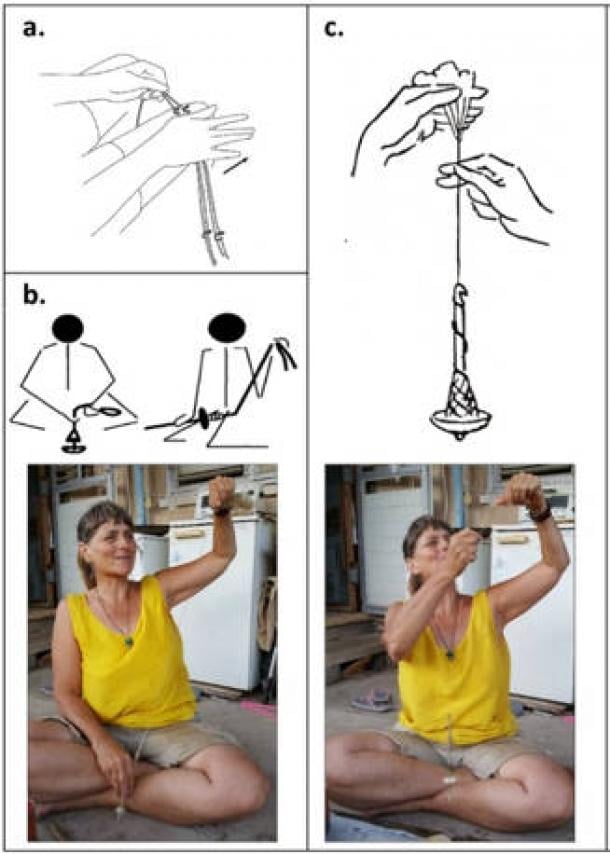🔴 Website 👉 https://u-s-news.com/
Telegram 👉 https://t.me/usnewscom_channel
In an exciting discovery from Israel’s Nahal-Ein Gev II archaeological site, a collection of perforated, donut-shaped stones may represent some of the earliest evidence of wheel-like technology in human history.
According to a study published in PLOS ONE by researchers Talia Yashuv and Leore Grosman from the Hebrew University of Jerusalem, these 12,000-year-old stones likely served as spindle whorls, essential tools for spinning fibers into yarn. This discovery suggests that early humans may have laid the groundwork for rotational technology long before the invention of the cartwheel.
Spindle Whorls: A Key Step in Rotational Technology
Spindle whorls are small, weighted objects that attach to a spindle stick, allowing it to spin more efficiently. These devices, when connected to a spindle, mimic the structure of a wheel and axle by rotating around a central axis, creating a steady motion used to twist fibers like flax or wool into yarn.
This ancient technology resembles the more well-known wheel-and-axle system used in transportation but on a smaller scale and with a different purpose.
Spinning methods. (a) Manual thigh-spinning [64]; (b) Spindle-and-whorl “supported spinning” [68]; (c) “drop spinning” [66]. The bottom pictures show Yonit Kristal experimenting spinning fibers with replicas of the perforated pebbles, using supported spinning and drop spinning techniques (photographed by Talia Yashuv/PLoS ONE).
The perforated stones were discovered within the context of a significant transitional period for early humans, as communities shifted towards agriculture and settled life. The find dates to approximately 12,000 years ago, during the Neolithic period. Researchers believe these spindle whorls might have enabled more productive textile-making processes, helping Neolithic communities to clothe themselves, store goods, and trade.
Reconstructing Ancient Spinning Techniques
To test their theory, Yashuv and Grosman examined the stones in detail using digital 3D models, analyzing the dimensions of the stones and their perforated centers. These digital reconstructions allowed the researchers to delve into the craftsmanship of early humans, uncovering what may be one of the earliest uses of rotational technology.
As part of the study, the researchers created replicas of these ancient spindle whorls to spin fibers and evaluate the stones’ functionality. They found that the whorls, when paired with a spindle, could indeed gather yarn efficiently, supporting their hypothesis that the stones served as spinning tools.
Techniques such as “drop spinning” and “supported spinning” were used in experiments, giving the researchers and the public a unique glimpse into prehistoric textile-making practices.
The experimental spindles and whorls, the 3D scans of the pebbles and their negative perforations. (Talia Yashuv/PLoS ONE).
Prehistoric Craftsmanship and Modern Reflections
The stones’ resemblance to early wheel-and-axle systems connects ancient textile production to later technological innovations like the potter’s wheel and, ultimately, the cartwheel. The researchers suggest that this early use of spindle whorls may reflect a larger trend in human history where rotational tools, initially designed for one purpose, paved the way for further advancements that would eventually transform human civilization.
“This study not only highlights the innovativeness of prehistoric artisans but also bridges ancient technologies with our present-day capabilities,” Yashuv explains. She adds that by reconstructing and testing these tools, researchers are able to connect modern technology with the resourcefulness of our ancient ancestors, revealing a continuous link between early invention and current-day scientific methods.
Implications for Understanding Human Innovation
While spindle whorls themselves were not wheels, they reveal a fundamental understanding of controlled rotational movement—an essential concept behind one of humanity’s greatest inventions. The findings open the door for future studies into other small, round, perforated objects that may have been overlooked or misclassified in archaeological contexts.
This discovery encourages a reevaluation of how and when humans first began using rotation to enhance their crafts, a practice that would eventually lead to technological milestones shaping the course of human history.
For more details on the study, visit PLOS ONE’s website.
Top image: Left; Talia Yashuv of the Hebrew University at the excavation site of Nahal Ein Gev II in northern Israel. Right; the experimental spindles and whorls. Source: Left, Naftali Hilger; Right, Talia Yashuv /PLoS ONE


